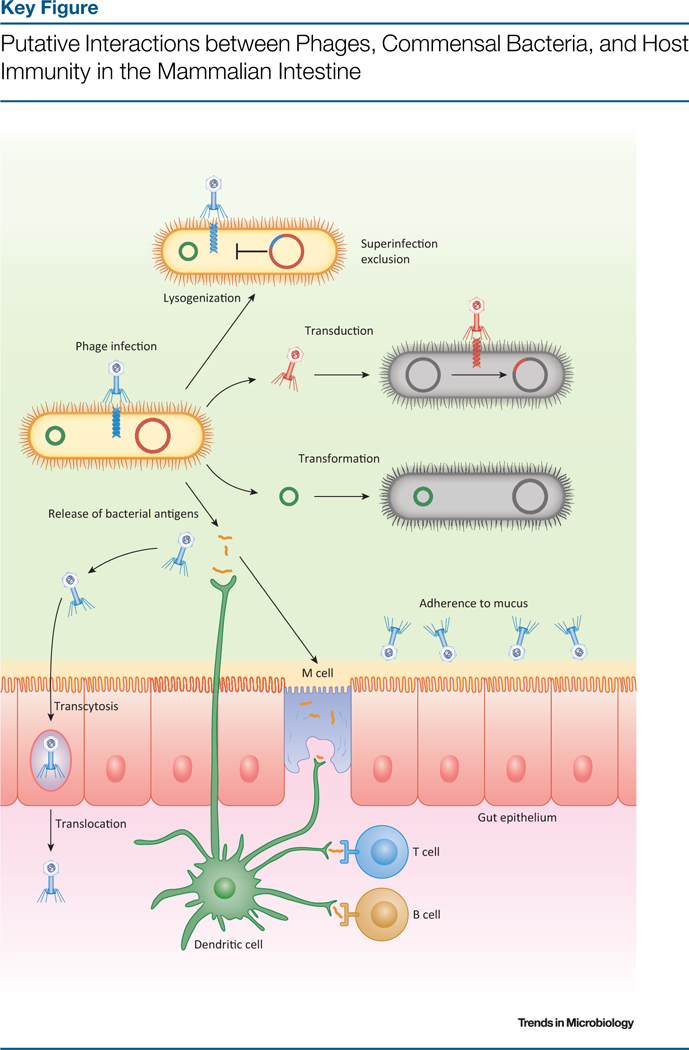Figure 2.

In this model, prophages block superinfection by other phages, and phage infection contributes to horizontal gene transfer via transduction and transformation. Phage particles adhere to epithelial mucus, where they reduce the densities of potentially invasive bacteria, and are occasionally translocated across the epithelium from the intestinal lumen. Phage antigens and bacterial debris released by lysis are transported through microfold (M) cells in Peyer’s patches and sampled by dendritic cells, which also acquire antigens directly from the intestinal lumen via cellular extensions between epithelial cells. These bacterial and phage antigens are presented to B and T cells in the Peyer’s patches and mesenteric lymph nodes, thereby driving a variety of immune responses not shown. Importantly, aspects of this model have yet to be explicitly demonstrated (see text).
